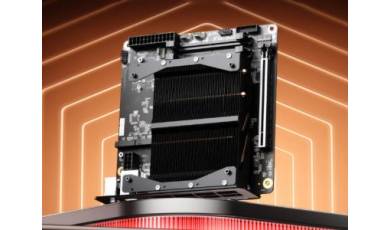Flash firmware on Mlais M4 Note
Mobiles >> MLais >> Mlais M4 Note| Specifications | Reviews | Secret codes |
| Unlock phone | Root phone |
| Backup | Flash Firmware | Screenshot |
How to flash Mlais M4 Note?
Why reinstall the firmware?
Errors in the operation of the Android OS begin to appear.
Some applications do not open, reinstalling which does not lead to a positive result.
Many programs from the Play Market do not start.
The phone restarts or shuts down by itself.
The phone is slow.
You want to update your firmware.
Where can I find the firmware?
On the official website of the phone manufacturer.
On specialized services where users post custom or official OS.
What should be done before installing the firmware?
Create a backup copy of all personal information: contacts, photos and transfer it to another computer.
Insert an SD card into your phone to write the firmware to it.
Remember your smartphone model.
Fully charge your phone battery.
Find and download the archive with Firmware.
Installing TWRP Recovery
Download the Official TWRP App to your phone from the Play Market. And install this app.
When you start the application for the first time, you must consent to future manipulations, as well as consent to granting the application Superuser rights. Check the checkboxes and press the 'OK' button.
On the next screen, select 'TWRP FLASH' and give the application root rights.
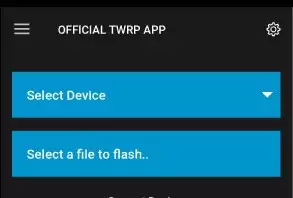
On the main screen of the application, select 'Select Device', and find your phone model.
After selecting a phone, the application will direct the user to a web page to download the modified recovery environment image file. Download the proposed *.img file.
When the file is loaded, you need to return to the main screen of the Official TWRP App and press the 'Select a file to flash' button. Select the file downloaded in the previous step.
Now press the 'FLASH TO RECOVERY' button and confirm your choice, press 'OK'.
After the burn process is complete, the message 'Flash Completed Succsessfuly!' appears. Click 'OK'. The TWRP installation procedure can be considered complete..
Copy the required files to the memory card. Using a PC or laptop card reader.
Insert a SD memory card into the phone.
To reboot into recovery, you need to use a special item in the Official TWRP App menu, accessible by pressing the button with three stripes in the upper left corner of the main screen of the application. We open the menu, select the 'Reboot' item, and then click on the 'REBOOT RECOVERY' button. The phone will reboot into the recovery environment automatically.
Firmware via TWRP
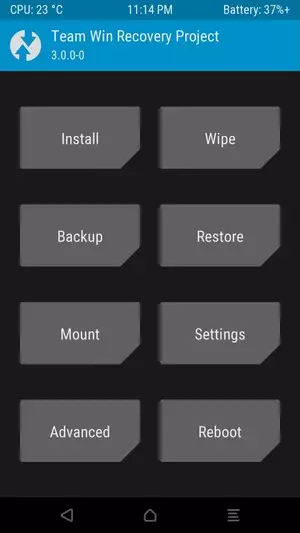
Before flashing, you need to clear the 'Cache' and 'Data' sections, press 'WIPE' on the main screen. You will delete all user data from the phone, this will avoid software errors and other problems.
Now you can start flashing. Press the 'Install' button.
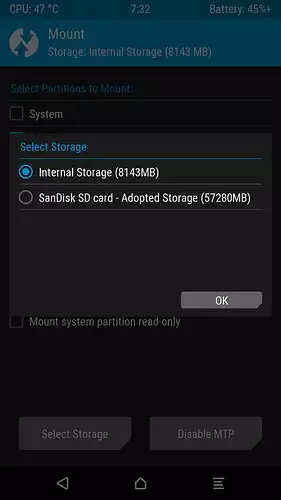
The file selection screen is displayed. At the very top is the 'Storage' button, select the location where the firmware file is located.
Select the storage to which the files were copied.
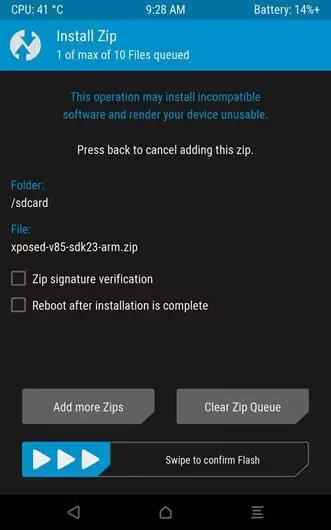
Select the firmware file and click on it. A screen opens with a warning about possible negative consequences, you need to check the item 'Zip signature verification', which will avoid using damaged files during recording.
The procedure for writing files to the phone's memory will begin, this is accompanied by the appearance of inscriptions in the log field and the movement of the progress bar.
The completion of the firmware installation procedure is indicated by the inscription 'Successful'.
Summary: Size: 77.0 mm x 150.0 mm x 8.4 mm; Weight: 175 g; Frame size: 0.29 mm; Usable surface: 71 %; Materials: Plastic; Colors: Black White; Diagonal: 5.5"; Screen Type: LCD IPS; Screen Resolution: 720 x 1280 px; Density: Medium Density, 267 Pixels per inch differentiable less than 40 cm away,; Others: Capacitive, Full Lamination Technology, Multi-touch; Operating System: Android 5.0 Lollipop; Model: MediaTek MT6732; CPU: Cortex A53 (ARMv8-A); Type: Quad-Core; Frequency: 1.5 GHz; GPU: Mali-T760; RAM: 2 GB; Antutu score: 34.203 Overall performance better than 68% of smartphones; Capacity: 16 GB (Capacity with the OS (depends on the brand and ROM version): 9-15 GB); More or less ...
Comments, questions and answers on the flash firmware Mlais M4 Note
Ask a question about Mlais M4 Note



